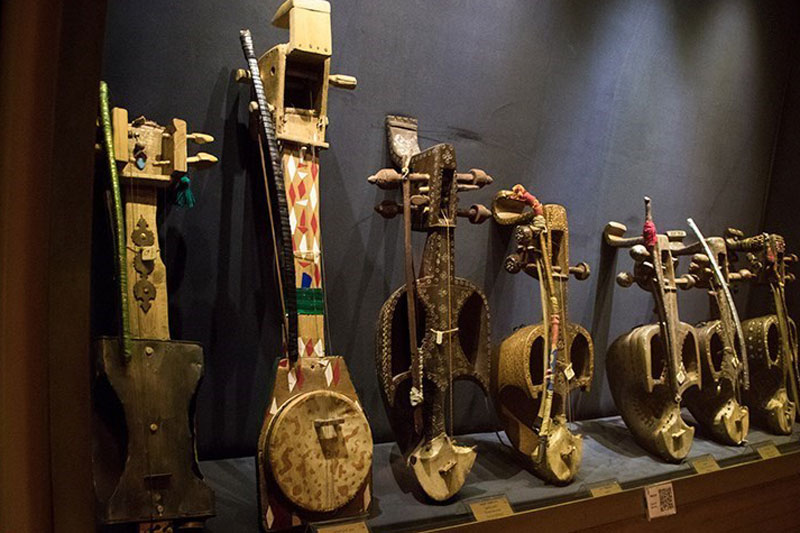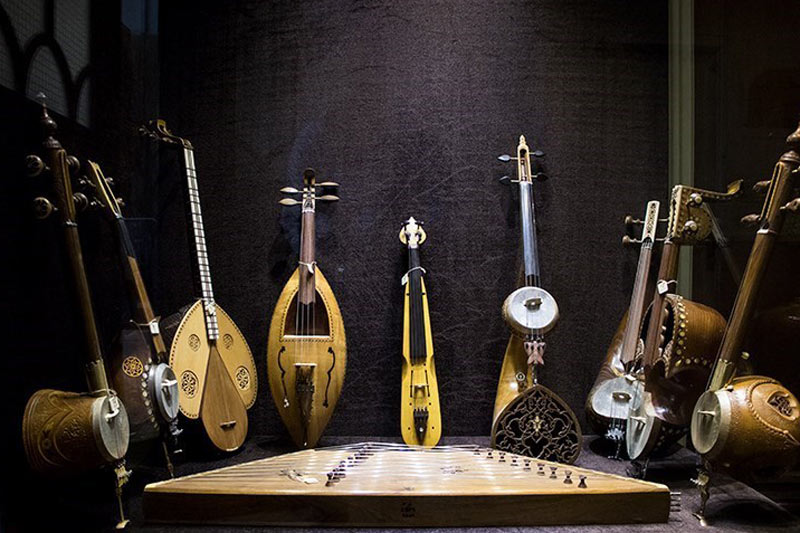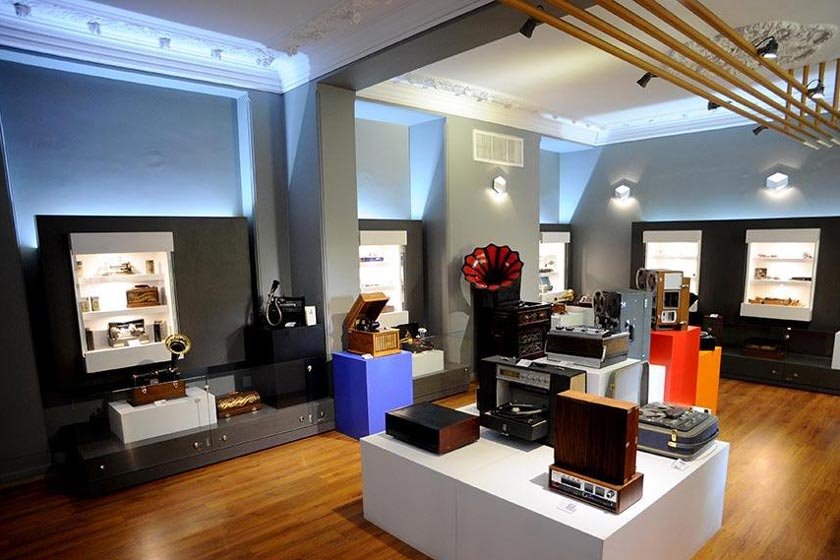Introduction of Music Museum
The role of such a museum is to preserve the heritage of Persian music, protect the works and values of Persian artists and introduce prominent music artists. The Music Museum has become one of the unique places for music, cinema, and cultural heritage seekers. The spectacular courtyard and green space of the place along with the outdoor cafes allow you to sit there for hours and enjoy your time. The artistic architecture of the museum building and the lighting that makes there more magnificent at sunset are also among the other glories of the mansion.
The Music Museum possesses three floors, which houses about 240 instruments of 200 distinct types; the place includes various sections such as instrument halls, museum treasures, audio and video archives, a specialized library, a workshop on the construction process, and an instrument warehouse.

History of Music Museum
Tehran, as the capital of Iran, has welcomed modern architecture sooner than other cities. However, there are mansions depicting the history and culture of Iran. There is a house near Tajrish Square with a lush courtyard and impressive architecture known as the Music Museum. The old house was originally a residential building that was delightfully renovated many years later in 2003 to display Iranian art and has become a permanent museum. The museum opening was held with the presence of professors and great musicians.

Facilities of Music Museum
There is an advanced audio guidance system in the museum, which is considered one of the best in the world. The audio guide system gives you accurate information about each section as same as a professional guide.
Museum Halls
Instrument halls include percussion, wind, traditional and string instruments, and those from several parts of Iran. The string and wind instrument hall on the ground floor consists of two parts; In the wind instruments section, there are various self-sounding ones such as flageolet, reeds, and pipes. In the stringed instruments section, you will see types such as percussion and bows, and in the percussion hall, some instruments are 1000 years old. The musical instruments of this hall are divided into two parts which depict one-sided and two-sided membrane phones; they have been collected from different areas of the country. Each saloon is designed almost in the form of instruments that are represented in it; for instance, the wind instrument hall has an interesting resemblance to a reed.

Museum Collections
Traditional instruments hall is also located on the first floor of the museum, where a variety of Persian musical instruments such as strings (Tar, Setar), santoors, and bow instruments such as fiddles, Kamancheh, and violins are displayed. Additionally, musical instruments made by great masters of traditional music such as Master Ebrahim Ghanbari Mehr musical instruments, Yahya strings, Mirza Abdullah setar, Naser al-Din Shah setar, and Hossein Malek santoor are gathered there. Some of the instruments have been lent to the museum, some have been donated, and others have been purchased by the museum. Among the instruments donated to the museum are those that belong to Kayhan Kalhor and Mohammad Eshghi, two of the most prominent dulcimer musicians, shining superbly behind the showcases.
Another part of the museum is treasures that are filled exclusively with the relics of Persian artists and music stars; memorials such as watches and clothes belonging to Master Ali Tajvidi, Master Malek Hossein’s Santoor, the leadership stick of Heshmat Sanjari Orchestra, and Taghi Masoudiyeh desktop calendar.

Recording and Playback Equipment Exhibition
There is also an exhibition of recording and playback equipment; showcasing the completing audio recordings process from the earliest examples of sound recorders to newer ones, the exhibition embraces music recorders such as phonographs, various types of stitch gramophones, electric recorders, cassette tapes, magnetic tapes, and wire recorders, which can be interesting for visitors.
The audio and video archive is one of the most impressive parts of the museum. In this section, an archive of Mohammad Ali Golshan Ebrahimi, the collector of Iranian audio works, has been donated to the museum, which is one of the perfect collections. Among the archives, the first recorded gramophone discs, ordered by Mozaffar al-Din Shah Qajar, are available that are one of the richest collections of music in Iran. The Persian Music Museum has considered a section as a workshop so that the stages of creating various instruments can be seen from the beginning to the time of playing the music.

Museum Library
The library of the Music Museum includes 11,000 volumes of books, of which 9,000 volumes are in Persian, 2,000 in Latin, and the rest from non-book sources and publications. This surpassing collection is one of the best resources for research and students in the field of music. The interesting point is the books in this collection that have been donated to the library by famous people, the oldest of which dates back to 1921 in Iran.

